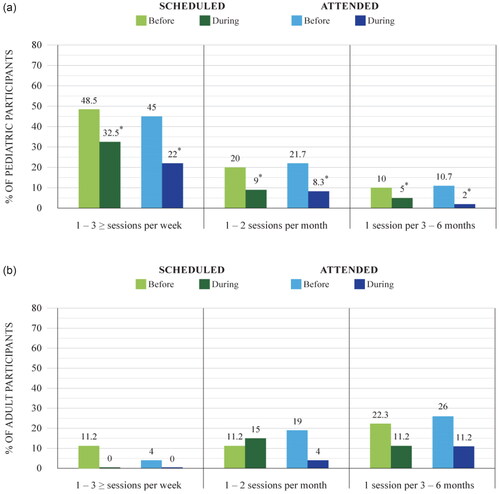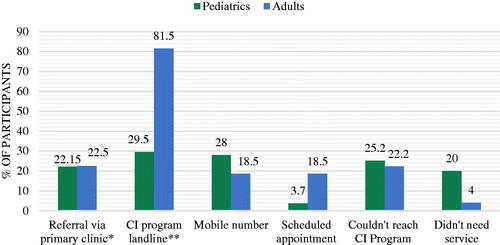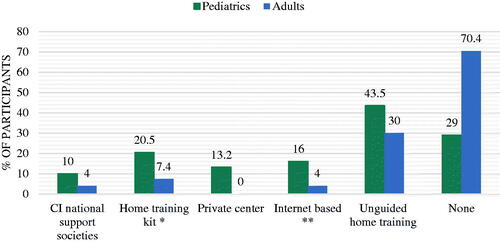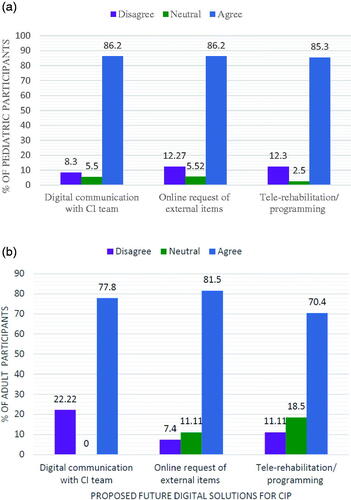Figures & data
Table 1. Demographic information of pediatric and adult participants; N = 353.
Table 2. Cochlear implant history and background information for pediatric and adult recipients; N = 353.
Figure 1. (a) Scheduled/attended aural re/habilitation sessions before and during COVID-19 pandemic in paediatrics. *p < 0.001, a correlation test was completed for each subgroup separately for scheduled and attended sessions. Subcategories were categorized as follows: intensive aural re/habilitation (i.e., 1–3 ≥ sessions per week), moderately intensive aural re/habilitation (i.e., 1–2 sessions per month), non-intensive aural re/habilitation (i.e., 1 session per 3–6 months). (b) Scheduled/attended aural re/habilitation sessions before and during COVID-19 pandemic in adults. A correlation test was completed for each subgroup separately for scheduled and attended sessions. Subcategories were categorized as follows: intensive aural re/habilitation (i.e., 1–3 ≥ sessions per week), moderately intensive aural re/habilitation (i.e., 1–2 sessions per month), and non-intensive aural re/habilitation (i.e., 1 session per 3–6 months).

Table 3. Correlation test P value results for tested parameters for N = 353 (Pediatrics: n = 326 and Adults: n = 27).
Figure 2. Methods of contacting CI program members in emergencies during COVID-19 pandemic. *Includes scheduled, walk-in, emergency room visits. ** Includes audiologists, and CI program coordinator.

Data availability statement
The data that support the findings of this study are available from the corresponding author, RA, upon reasonable request.


